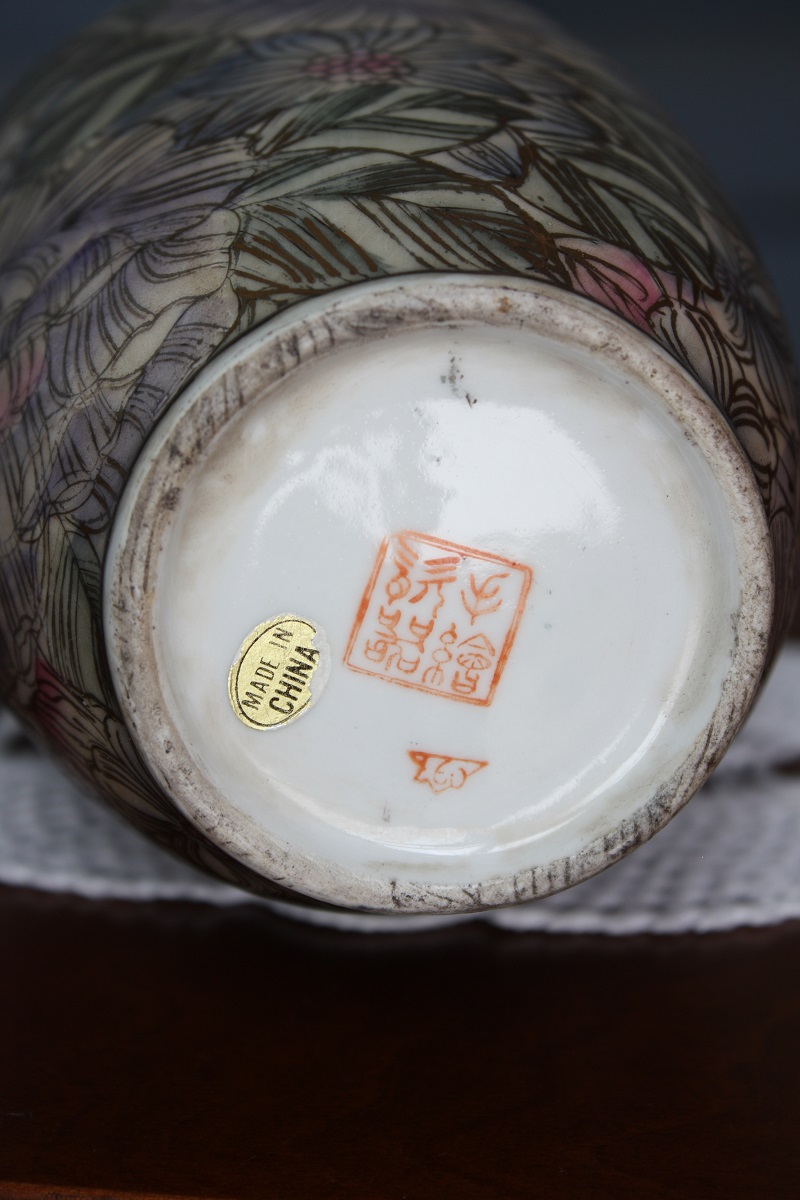
Unknown Chinese porcelain mark
Porcelain —a white vitrified ceramic comprised of fine clay—was invented in China over 3,000 years ago. In the years since, artisans have consistently improved the way they craft and mark porcelain objects. Chinese craftsmen began using porcelain marks as early as the first century as a way to reference the date of creation.

Meanings and Misconceptions of Chinese Porcelain Marks
Here, a sampling of common marks in pottery: Adams Ironstone This English brand featured a crown and "ADAMS" written in all capitals within a circle that contained more information about the company. Adams pottery was actually a collection that came from three different relatives, all named William Adams, whose production dates often overlapped.

Chinese pottery, Chinese ceramics, Pottery marks
Qing period emperor porcelain marks. Porcelain ordered by the emperor was fired at Jingdezhen, and a crest with the emperor's name was written in kanji or seal engraved on the blue and white porcelain. (大 Great 清 Qing dynasty 康熙 emperor Kangxi 年Year 製 Made) 大清康熙年製 da qing Kangxi nian zhi (1662-1722)
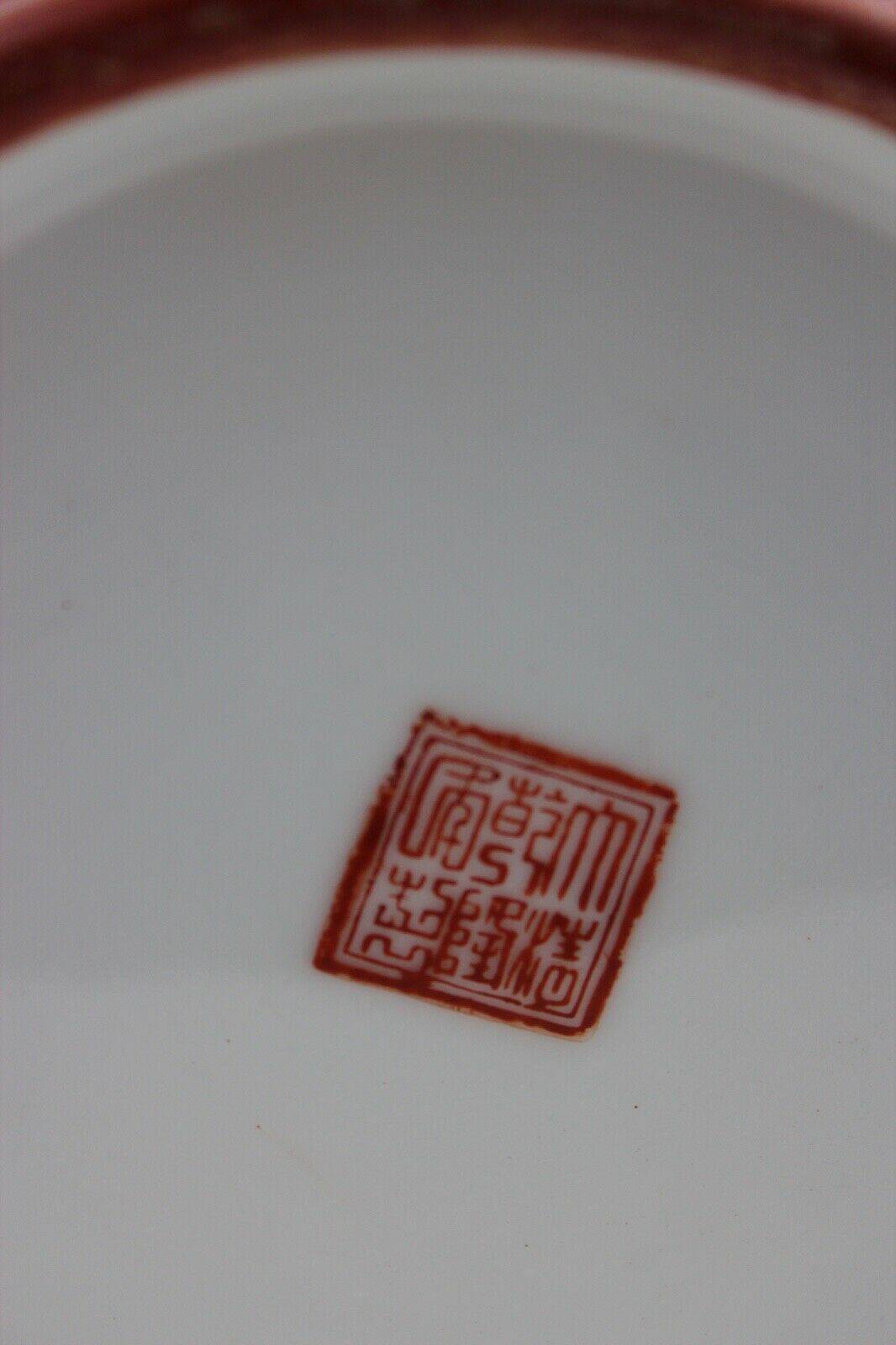
17 Most Valuable Chinese Pottery Marks Worth Money
How to Read the Marks? Enamel paited porcelain made in Qing's Emperor Qianlong's reign. According to the ancient Chinese tradition of writing and reading, the marks on the bottom of a porcelain vessel are usually read from top to bottom, and from right to left. Marks written horizontally are read from right to left.
Chinese porcelain marks Antiques Board
Dated Chinese Porcelain. This is a list of Chinese porcelain pieces that have been decorated in such a way that the decoration includes a date. The dates are almost exclusively given as Chinese cyclical dates, which are repeated in 60th year cycles.Without a reference to the period of the reigning emperor, it is thus possible to by mistake date a piece 60 years back or forward in time.

Porcelain Marks, Pottery Marks and Ceramic Marks Guide Pottery marks, Chinese pottery, Pottery
This selection of marks below contains mainly Chinese porcelain marks of the Ming and Qing dynasties, and a few republic period antique marks. Marks listed below are from antiques that are about 80 years old or older. That means from approximately 1930 or earlier. Marks on vintage and contemporary porcelain items are not included.

please help for Identification name this Chinese Pottery Marks porcelaine Chinese porcelain
Identifying a mark on a piece of pottery or porcelain is often the first step in researching the value of these antique and collectible pieces.
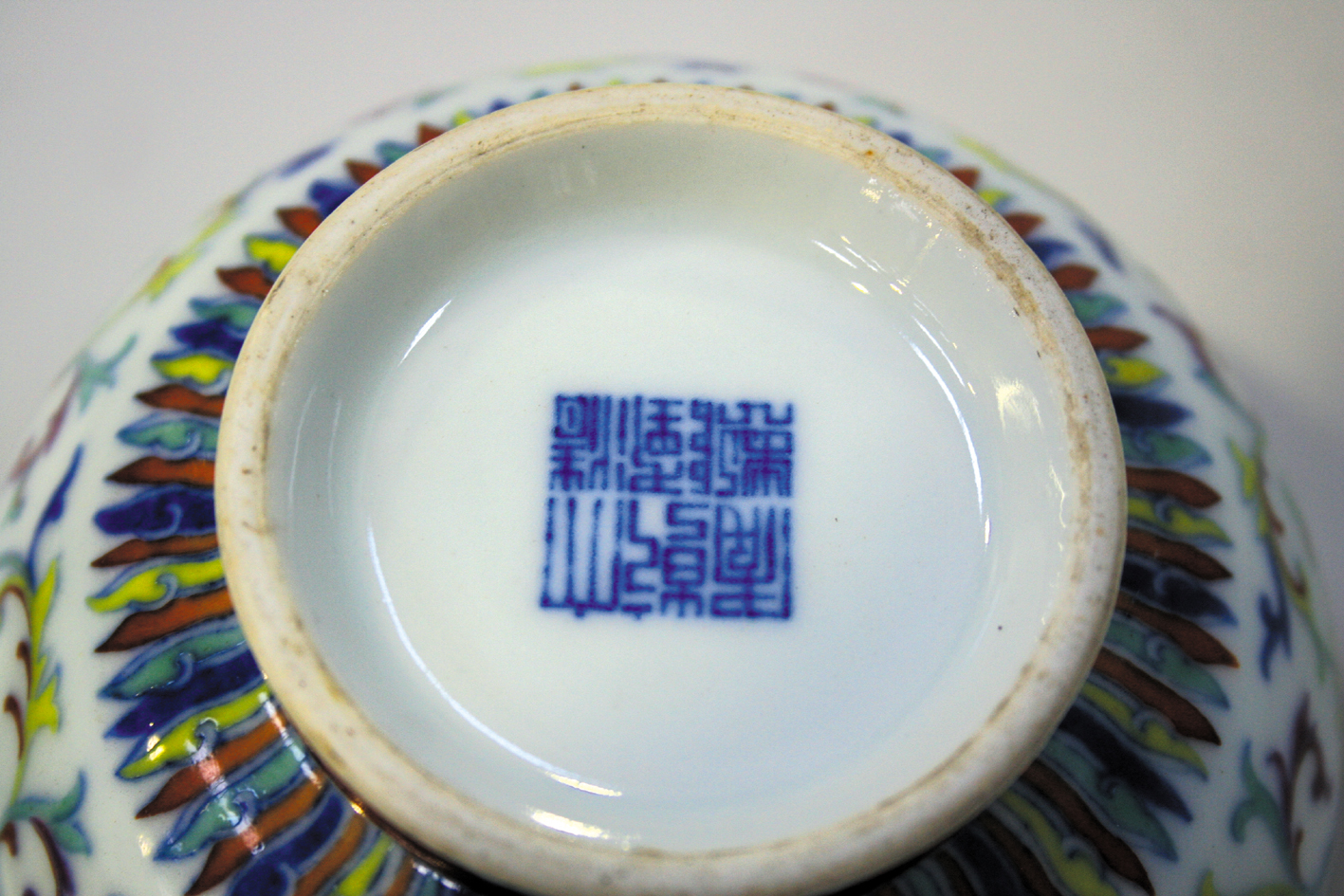
Delicacy and Brilliance, Chinese Doucai Porcelain Toovey’s Blog
Zhong Guo Zhi Zao (China Made). Mark on modern Chinese porcelain spoon. The similarity to mark 260. Dish. "Qianlong Nian Zhi", seems to indicate a date around 1970. 502. Zhong Guo - "China". C. 1950-1970: 189. Zhong Guo - "China". Mark on modern Chinese porcelain spoon. C. 1970 and later.
Chinese porcelain marks Antiques Board
Often times a piece of china will bear two marks in this way: one beneath the glaze, indicating the factory that produced the blank, and the second above the glaze indicating the decorator.
Chinese porcelain marks Antiques Board
Valuable Chinese pottery marks are sometimes known as reign marks. And no, we don't mean 'Made in China'. These marks are written vertically, right to left, using indigenous Chinese characters. A typical mark has 4 to 6 symbols confirming the emperor and dynasty. Item: Porcelain Statue; Year: 1960s or 1970s; Value: $2,600

Chinese Porcelain Vase Iron Red Qianlong Mark
The "PEOPLES REPUBLIC OF" or its abbreviation P.R.O.C. in Western or Chinese characters was added from 1949. The general appearance of the piece must always be taken into the consideration but these dates might help as a starting point to put a "not before, anyway" date on the pieces.

Herend Porcelain Marks Pottery marks, Chinese pottery, Antique pottery
Marks on Chinese Porcelain Marks on Later Chinese Porcelain It is said, that the only rule that is really certain when it comes to Chinese reign marks, is that most of them are NOT from the period they say. Still the marks are something of a fingerprint of the potter and its time.
.jpg)
Mark and Period An Introduction to Chinese Qing Dynasty Porcelain Marks
The pictorial marks are pictures or designs of various abstract or real items, like censers, etc., but also those of animals, plants, etc. (e.g. hares, fish, leaves, egrets). Simply said, the large majority of Chinese marks do not allow the dating of ceramics based on the mark alone.
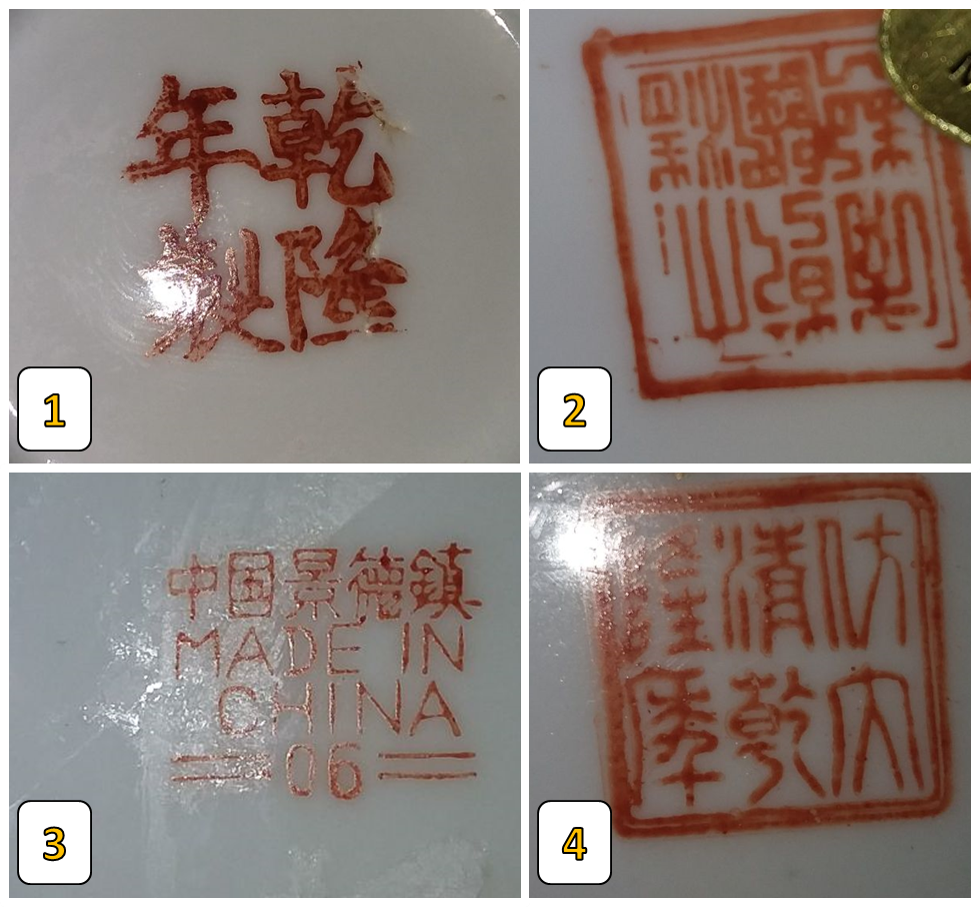
Chinese Porcelain Marks Identification
Chinese reign and seal marks on porcelain are usually hand-written in underglaze blue or over the surface of the glaze in iron red pigment. They can sometimes also be incised or stamped/carved in relief and glazed over. Later 19th and 20th century marks are sometimes printed using rubber stamp in either red or blue. Need more help?
Chinese porcelain marks Antiques Board
Minton Mark c1850 Amherst Japan Paragon China Paris Porcelain Mark Bourdoir & Bloch Rosenthal Porcelain c1930 Royal Bonn Lyonais c1897 Royal Bonn Sarreguemines Mark France Wien Keramos Austrian c1930 Mayer & Sherratt c1906 to 1920 Wade Pottery Mark c1957 onwards Gerbing & Stephan G & St c1861 to 1900 Louis Majorelle Makers Mark
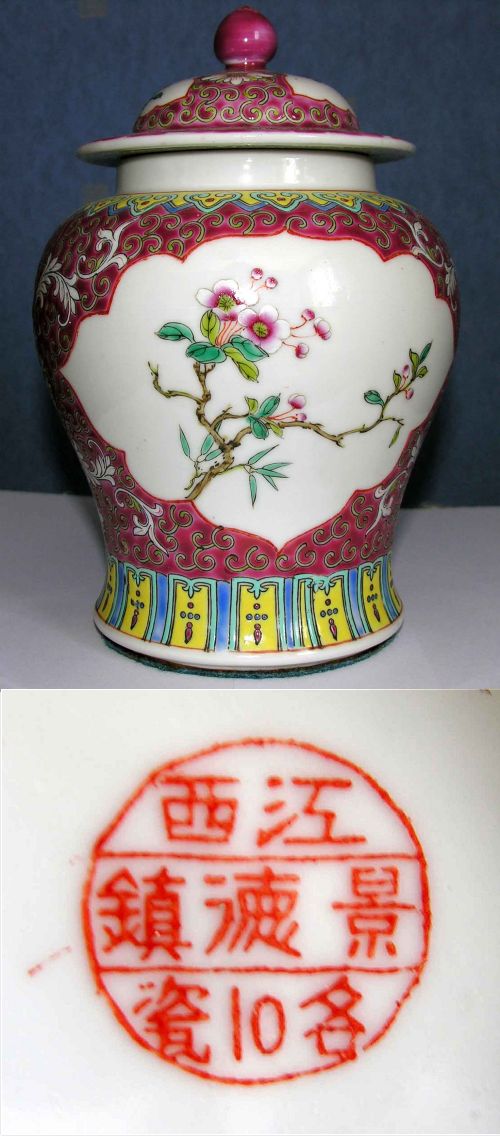
Marks on Chinese Porcelain
Porcelain marks of different manufacturers. There is and was a multitude of porcelain manufactories and porcelain factories in Germany, but also in France, Italy, England, Denmark, Poland, Czech Republic, but of course also outside of Europe, in Japan and China.